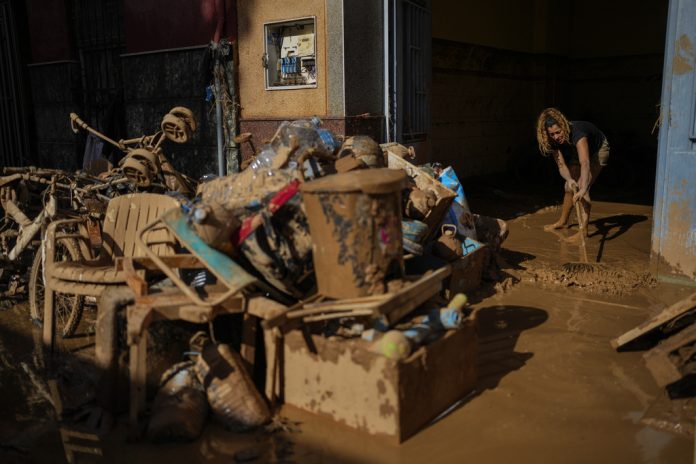Human-caused climate change made Spain’s rainfall about 12% heavier and doubled the likelihood of a storm as intense as this week’s deluge of Valencia, according to a rapid but partial analysis Thursday by World Weather Attribution, a group of international scientists who study global warming’s role in extreme weather.
Monstrous flash floods in Spain claimed at least 158 lives, with 155 deaths confirmed in the eastern Valencia region alone. An unknown number of people are still missing and more victims could be found. Crews searched for bodies in stranded cars and sodden buildings Thursday.
World Weather Attribution said climate change is the most likely explanation for extreme downpours in southern Spain, as a warmer atmosphere can hold more moisture, leading to heavier downpours. The group noted its analysis is not a full, detailed attribution study, as the scientists did not use climate models to simulate the event in a world without human-caused warming.
Scientists looked at historical observations of rainfall, which they say indicate that one-day bursts of rain in this region are increasing as emissions from the burning of fossil fuels warms the planet.
“We haven’t had time yet to do a full attribution study about the flooding that’s just taken place in Spain. But what we have been able to do is to look at observations of rainfall in the area,” said WWA expert Clair Barnes. “And based on the recorded rainfall, we’ve estimated that similar events have become about 12% more intense, and probably about twice as likely as they would have been in a pre-industrial climate, about 1.3 degrees (Celsius) cooler, without human-caused climate change.”
“I’ve heard people saying that this is the new normal,” added Barnes, a statistician who researches extreme weather events and climate change at the Imperial College London. “Given that we are currently on track for 2.6 degrees of warming, or thereabouts, within this century, we are only halfway to the new normal.”
Since the mid-1800s, the world has already heated up by 1.3 degrees Celsius (2.3 degrees Fahrenheit), up from previous estimates of 1.1 or 1.2 degrees because it includes the record heat last year, according to the United Nations Environment Programme’s annual Emissions Gap Report released last week.
The world is on pace to hit 3.1 degrees Celsius (5.6 degrees Fahrenheit) since pre-industrial times. But if nations somehow do all of what they promised in targets they submitted to the U.N., that warming could be limited to 2.6 degrees Celsius (4.7 degrees Fahrenheit), the report said.
Ben Clarke, a researcher at the Centre for Environmental Policy, Imperial College London, pointed out that a powerful typhoon made landfall in Taiwan on Thursday, just after the flooding in Spain.
“These back-to-back events show how dangerous climate change already is with just 1.3 degrees Celsius of warming,” Clarke said in a statement. ___
The Associated Press’ climate and environmental coverage receives financial support from multiple private foundations. AP is solely responsible for all content. Find AP’s standards for working with philanthropies, a list of supporters and funded coverage areas at AP.org.
Source: post





